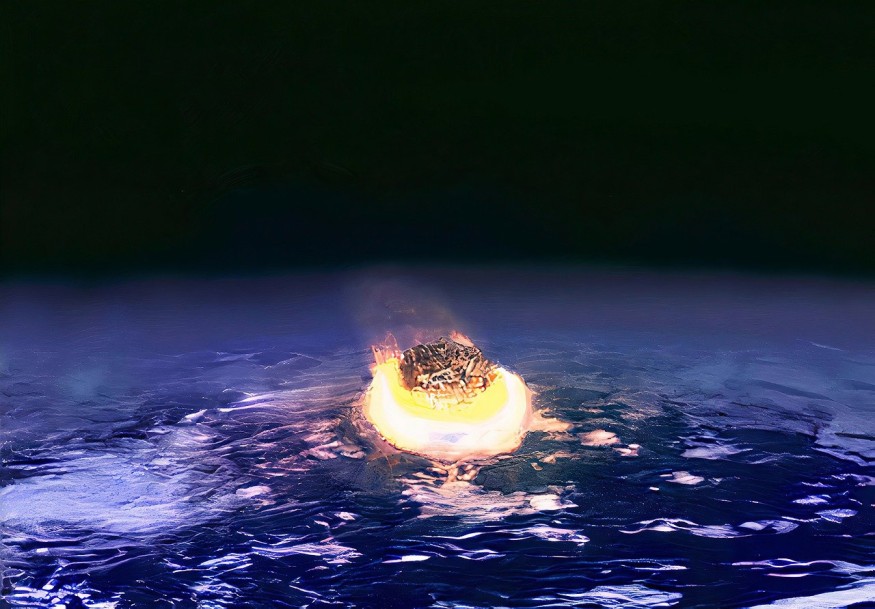
Erg Chech 002, the oldest meteorite ever found, dates back to 4.6 billion years ago, which is a time when the Earth did not even exist. This distinct space rock could shed light on the early solar system as well as how accurately the age of meteorites is computed.
Erg Chech 002: the Oldest Meteorite Ever Found
Erg Chech 002 was found back in 2020 in the Erg Chech region of Algeria's Sahara desert. It primarily comprises volcanic rock. Because of this composition, experts think that it came from an early planet's crust.
An earlier study discovered that the rock used to be liquid lava. However, as time passed it solidified and cooled until it became the 70-pound rock that eventually reached the Earth.
There have been no other asteroids that were observed to harbor similar features. As such, this suggests that its source protoplanet could have disappeared by getting destroyed or by joining bigger bodies.
Read also: Erg Chech 002: 4.6 Billion Year Old Meteorite Shed Light on the Evolution of the Solar System
EC 002, the Early Solar System, and Meteorite Age Computation
EC 002 has now been seen to shed light on how the early solar system used to be. Aside from this, an Australian research team also says that their study challenges how meteorite age computation is typically done and suggests that some meteorites could be younger than thought.
Such notions are based on how they discovered that EC 002 harbored more Aluminium-26 (26AI) radioactive isotope compared to other similarly-aged stony meteorites or achondrites. As such, these findings are of great value because they counter the notion that 26AI, which is perceived to offer a source of heat for the planet's building blocks, was scattered evenly when the solar system was still in its earlier phases.
Specialists typically gauge a meteorite's age based on how much 26AI is present on the specimen upon formation. However, if the isotope was indeed unevenly distributed as suggested, this means that it does not serve as a reliable metric for accurately gauging a space rock's age. Its role in planet formation also ends up unclear.
These notions counter earlier research that suggests the even distribution of 26Ai in the way to planet formation. Scientists think that the interstellar cloud collapse, which facilitated the birth of the solar system, could have been triggered by a supernova's shockwave that further led to a solar nebula's creation.
The isotope then played a vital role in the journey towards present-day Earth because of how it provides sufficient heat amidst radioactive decay in order to come up with planet bodies that have layers inside them, like that of the Earth. 26AI also aids with early planetesimal drying to facilitate the production of rocky and water-poor planetary bodies.
Given its short half-life of around 770,000 years, specialists think that the isotope could have gotten formed or mixed with a planet-forming disk near the sun shortly prior to the solar system's first solid matter condensation.
The isotope's presence in EC 002 offers a chance to look into the isotope's initial distribution prior to the Earth's formation. The even or uneven distribution of the isotope in the early solar system is crucial to determining meteorite age.
According to the analysis of researchers from the Australian National University, the space rock's lead-isotopic age lies at roughly 4.566 billion years.
Combining such findings with existing data on the meteorite and comparing it with other aged meteorites, the researchers showed that 26AI was unevenly distributed in the early solar system. As such, they note that meteorite chronology researchers should be careful and should have a more general approach to dating isotopes that are short-lived and with their uneven distribution accounted for.
Doing so would, in turn, boost the reliability and accuracy of meteorite age computation.
RELATED ARTICLE : How Old Is Earth? Meteorite Suggests Water Exists In Solar System Even Before The Planet Itself
Check out more news and information on Space in Science Times.
© 2026 ScienceTimes.com All rights reserved. Do not reproduce without permission. The window to the world of Science Times.












